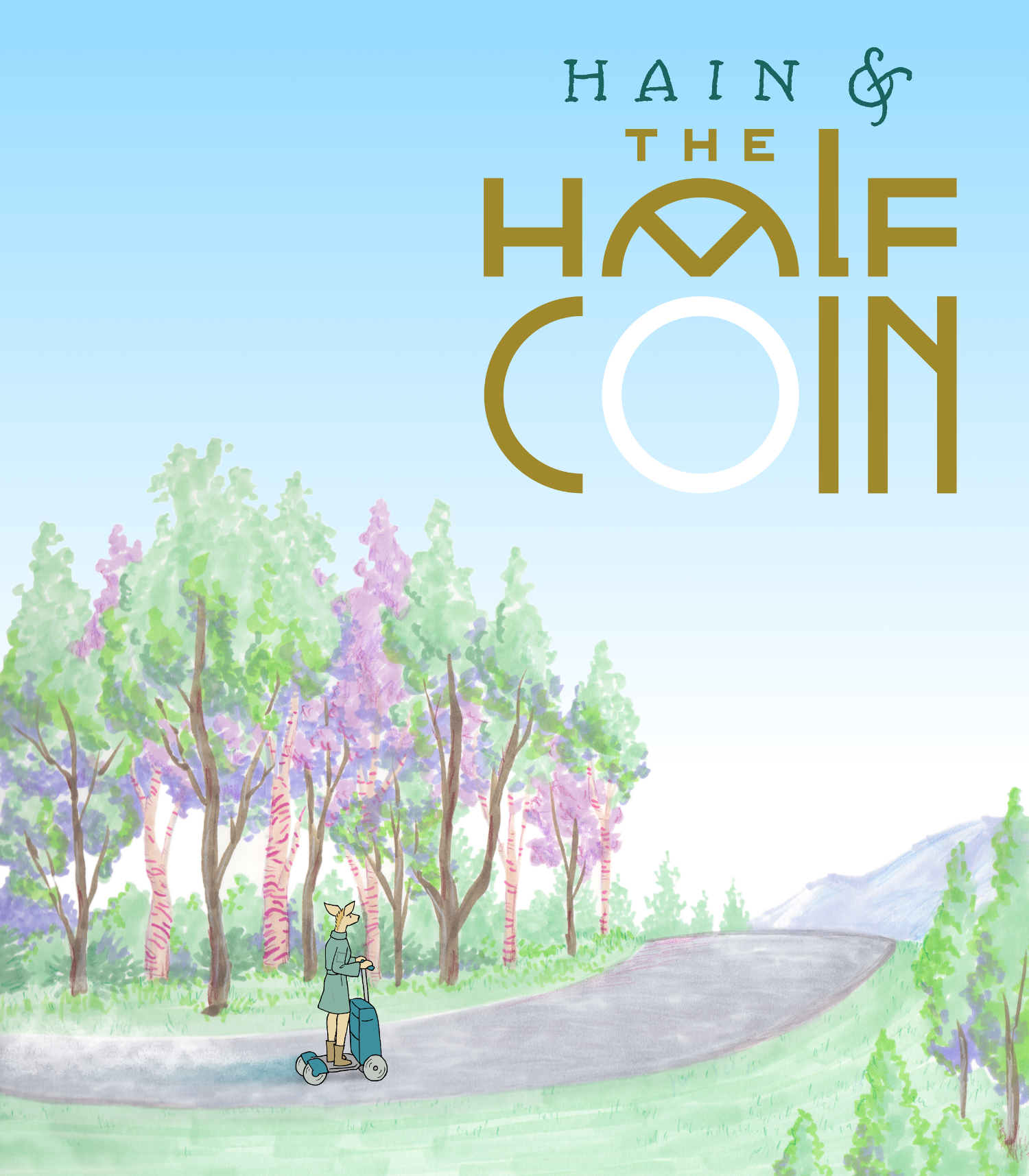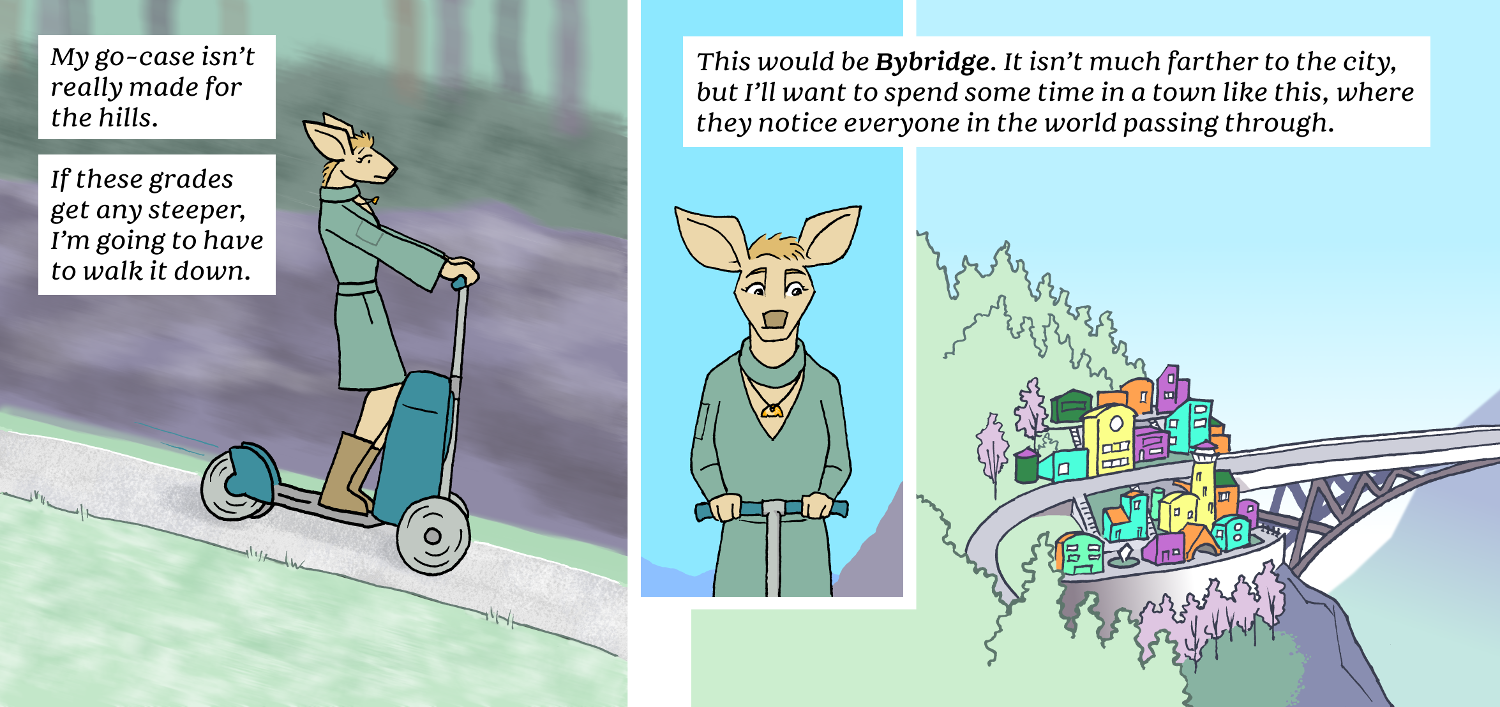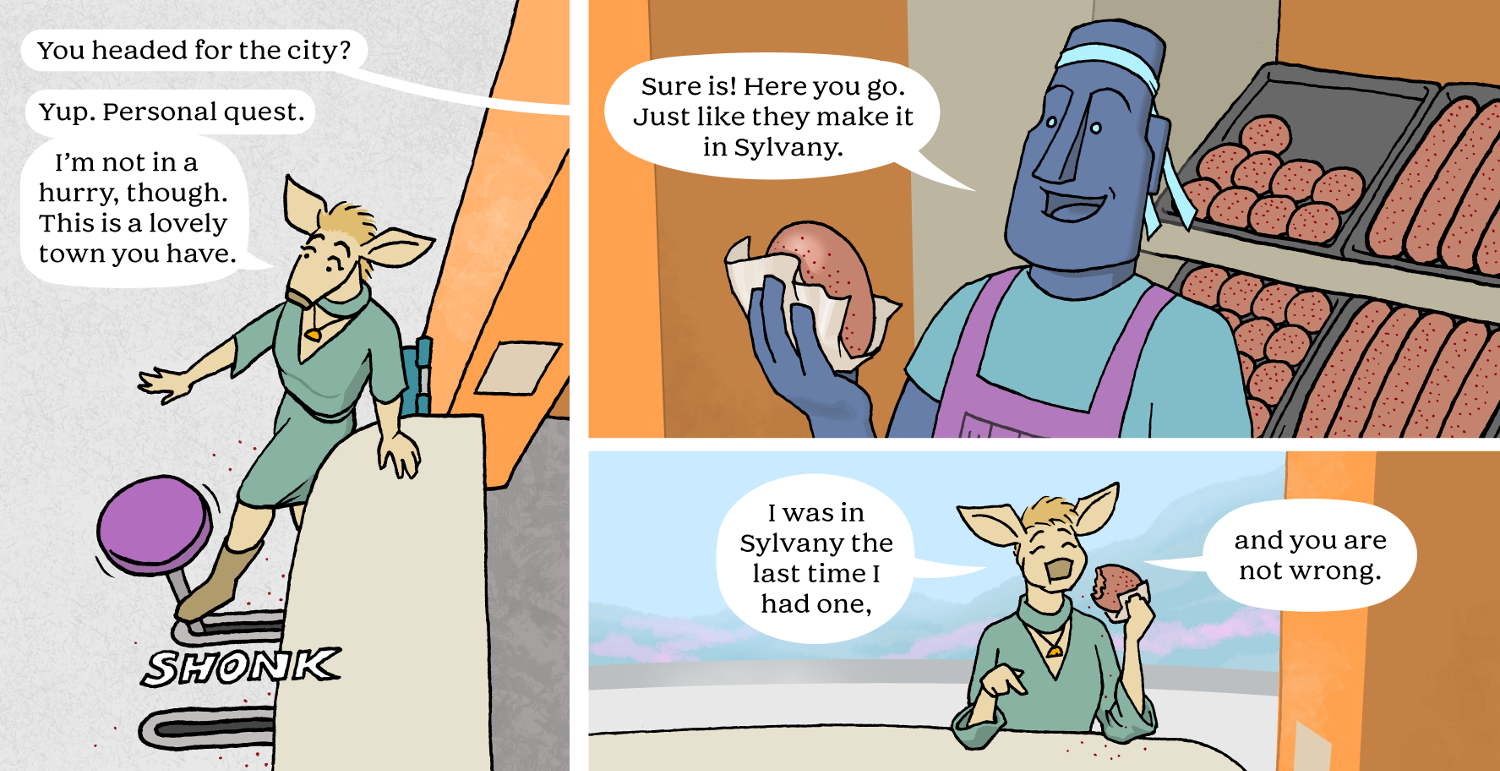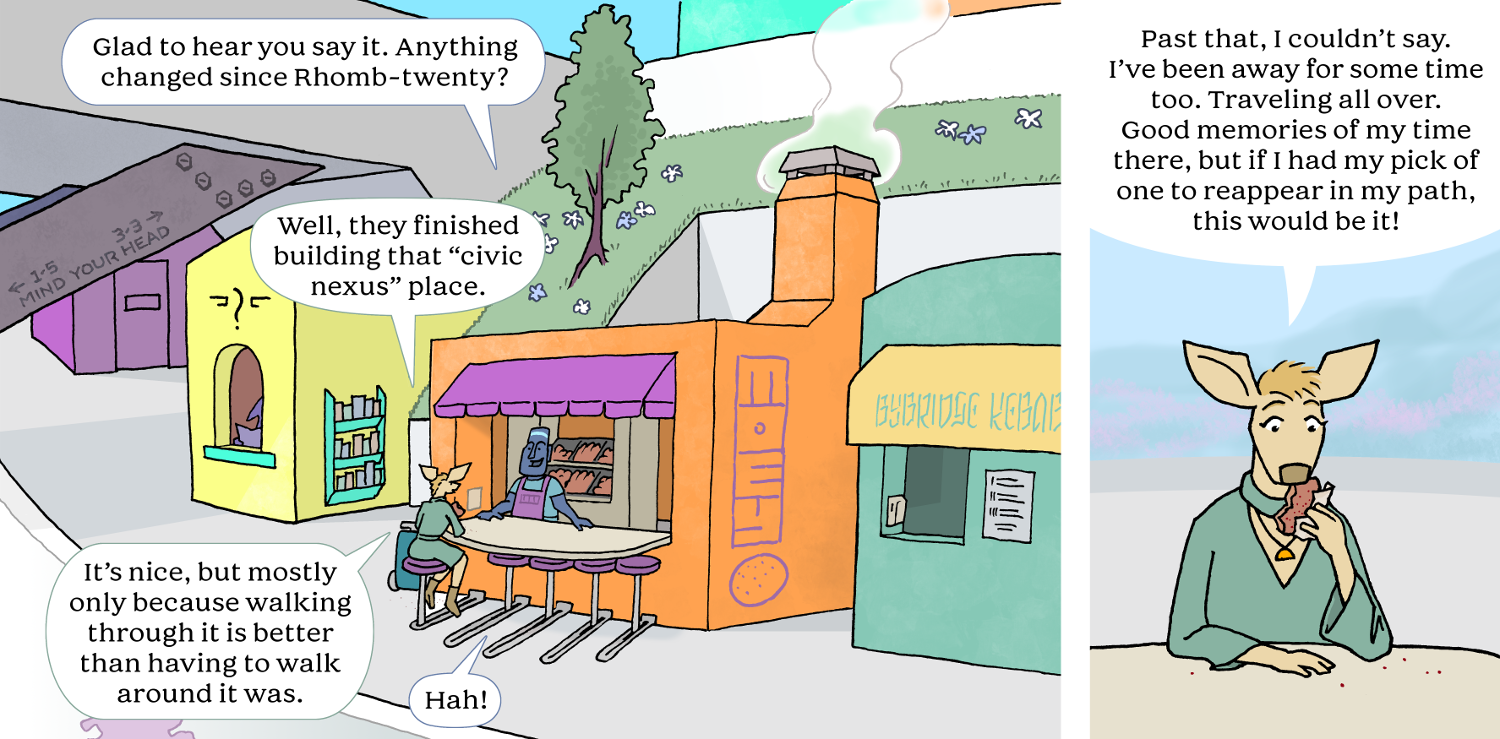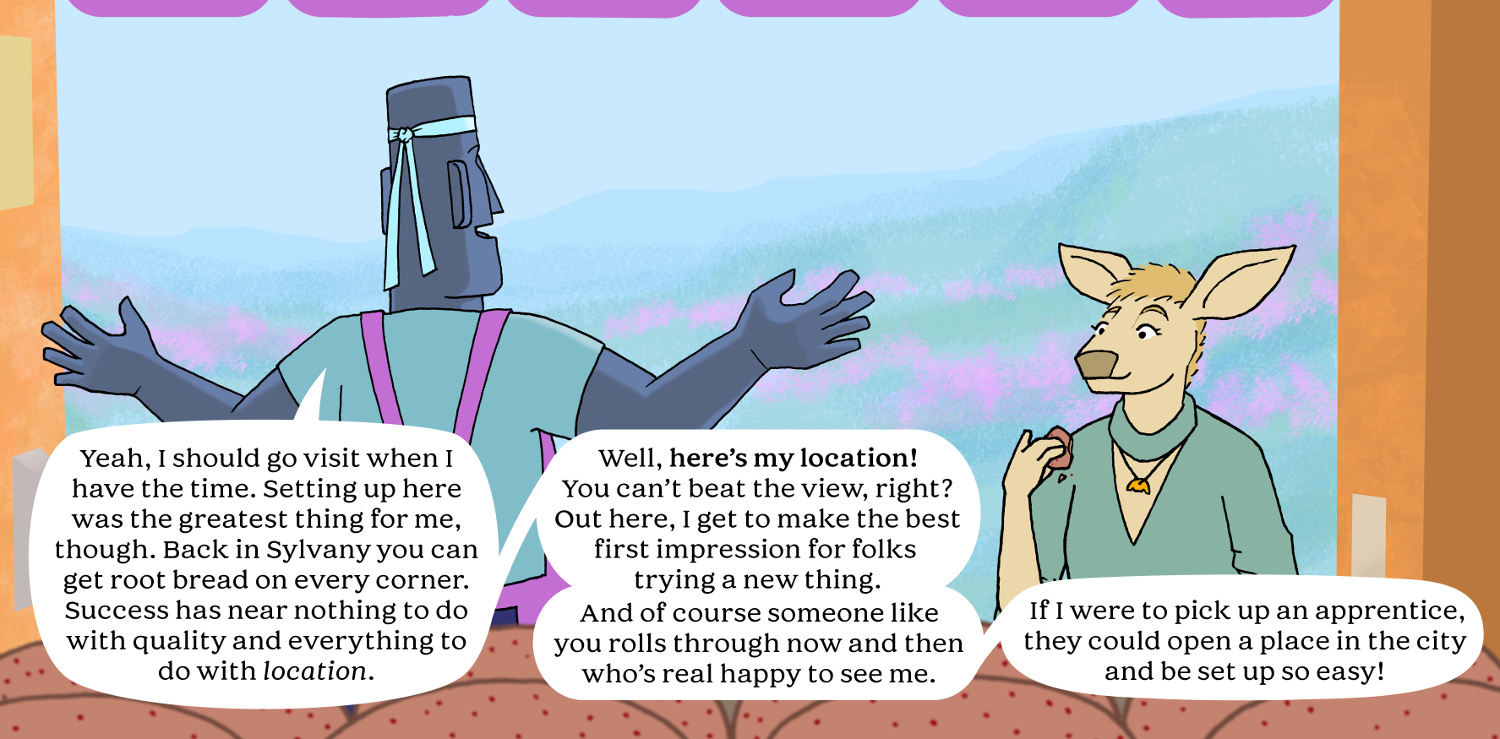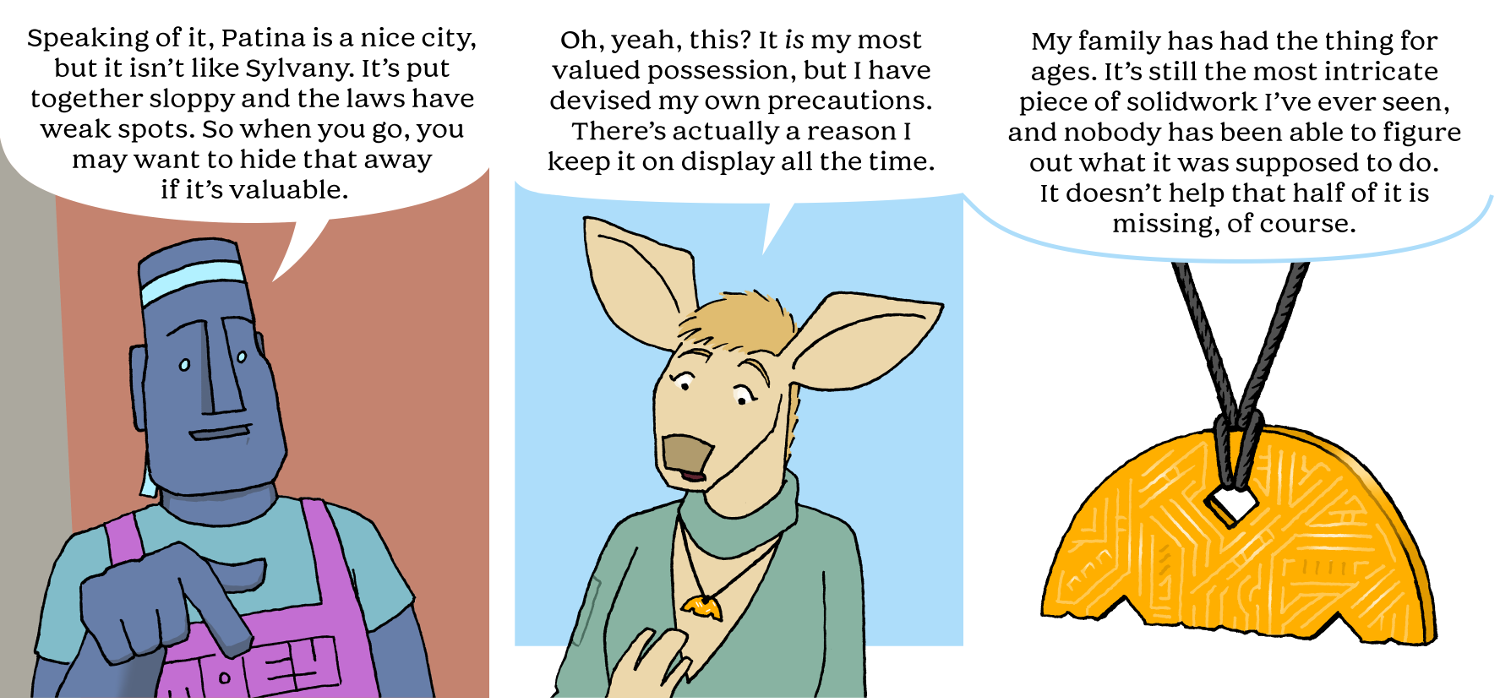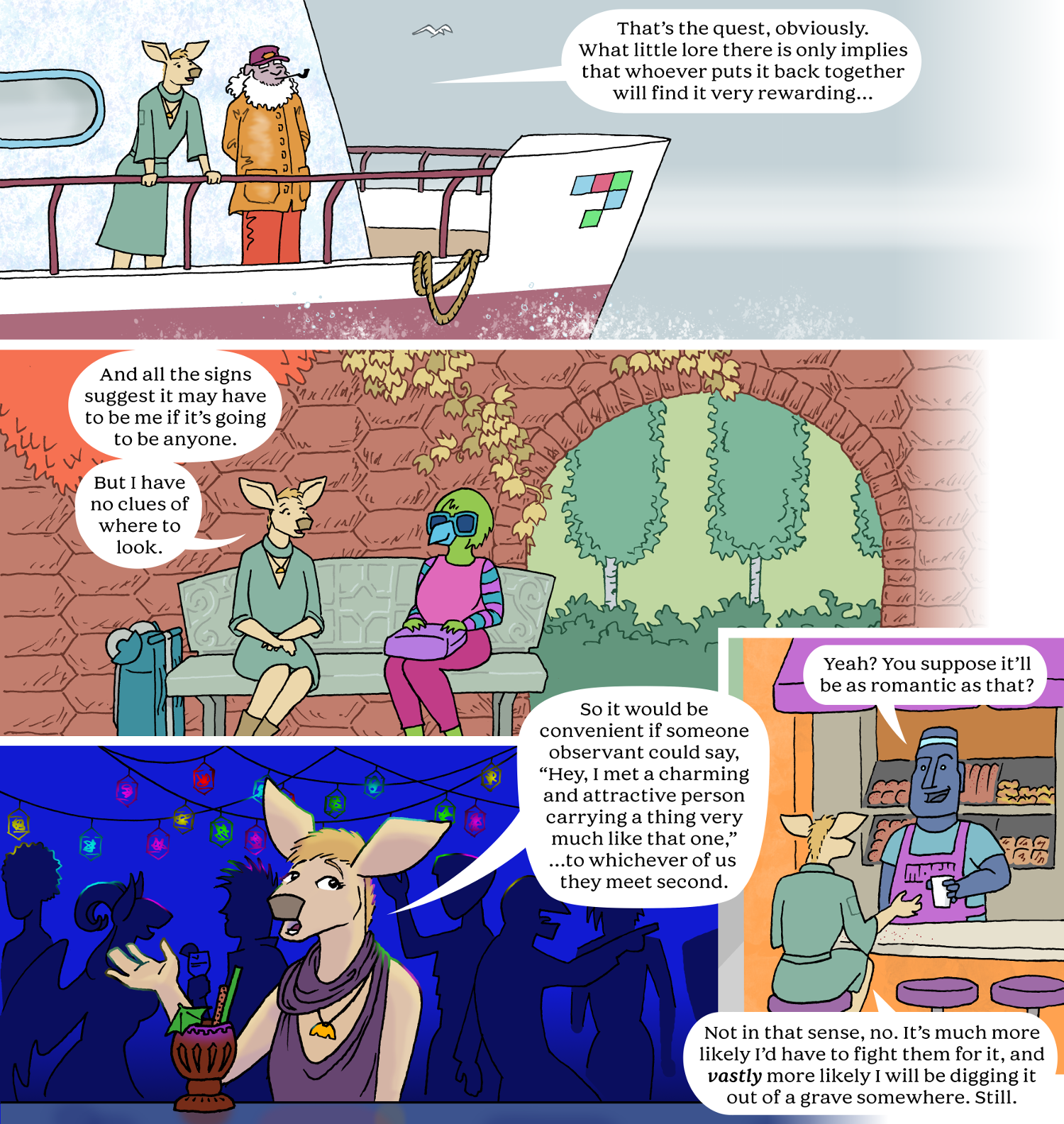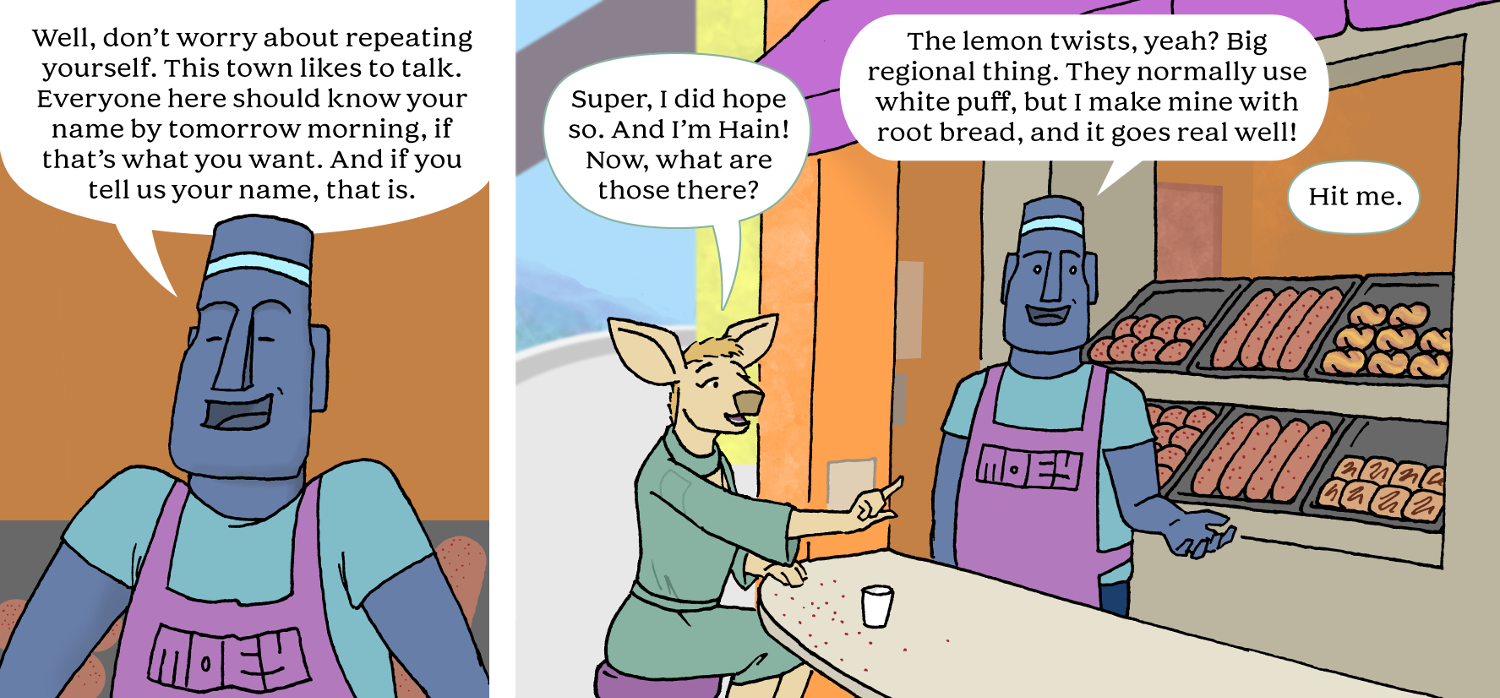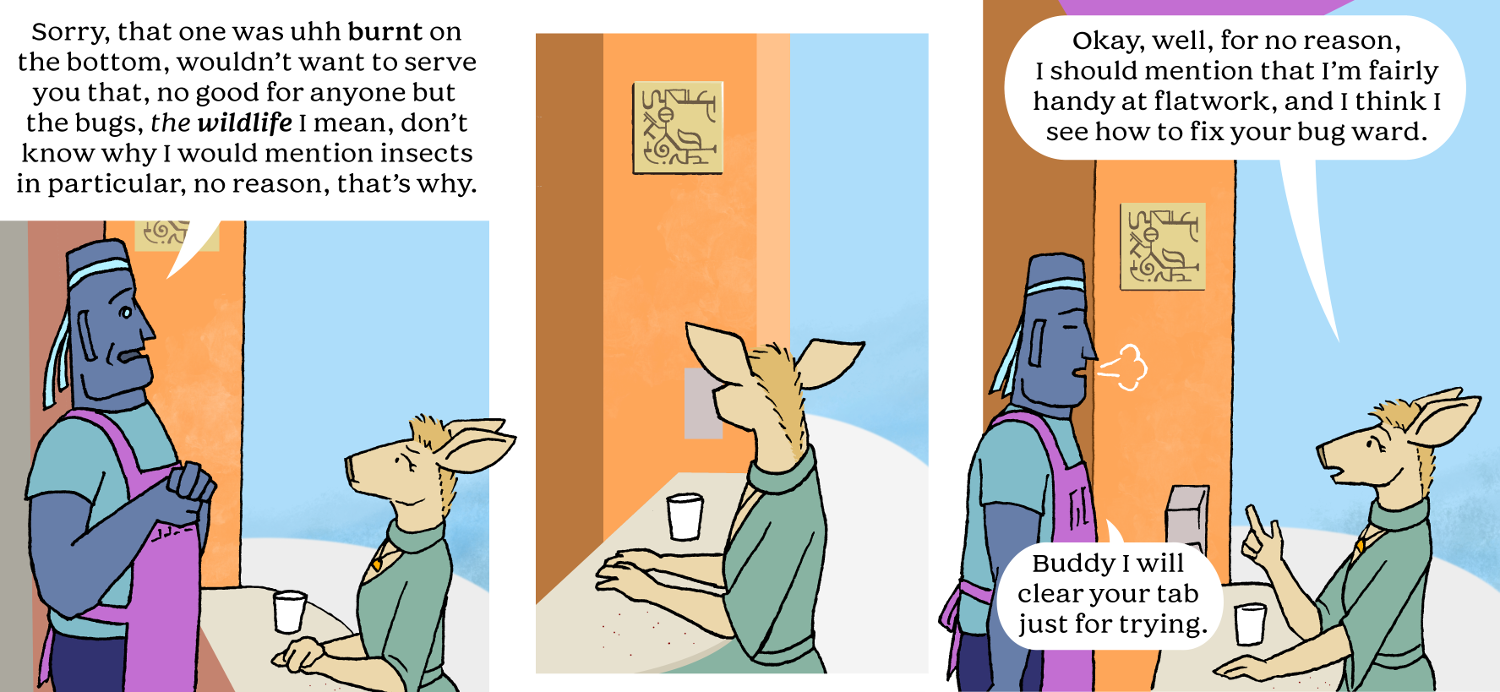The technological craft of this world, based in magical effects invoked and directed by shapes, is divided by medium into two categories. Devices forged in three-dimensional materials are known as solidwork or solidry. Creations applied to a two-dimensional surface are known as flatwork, and nothing else, on the insistence of its practitioners, like Hain, who all have had to hear the same joke, "go into solidry because flattery will get you nowhere," so many times in school that they never want to hear the word again.
Updates to Hain and the Half Coin are appended to this page row by row as I finish them. —K
Text transcript
Footnote 1: These gentlemen are playing a form of lawn bowls using heavily-weighted octahedra that won't roll very far, which is practical when you live on a mountain and don't want to lose them. Each has a few faces of the opposing color, and the rules of "knock-ocks", as it is called, reward collisions that change the lie of "ocks" already on the field. They are not dice per se, as skilled players can make throws that do not entirely leave the result to chance, and this is encouraged.
Footnote 2: Root bread, as the name implies, is a baked treat made with the same kinds of tree flavorings that we use in beverages such as root beer and birch beer. The flora of Hain's world are not always exactly the same as ours, but if you want to try to make your own root bread, first consult what others have written on the subject of baking with soft drinks, and good luck.
Footnote 3: The Fair Continental Calendar consists of thirty-year phases denoted with a cycle of simple shapes. It was designed to ameliorate the stress people invest in numerical milestones, by dividing time into portions that are too long to be defined by cultural fashions, as happens with decades, but too short to elicit the hysterical significance assigned to the turn of a century. Opinions are mixed on whether it has helped as intended, but it has been established for long enough to resist changing again.
In reality, it exists so that I do not have to track story time to fit into a concrete timeline. You are not going to find out exactly how long ago Rhomb-twenty is. It doesn't matter.
|
